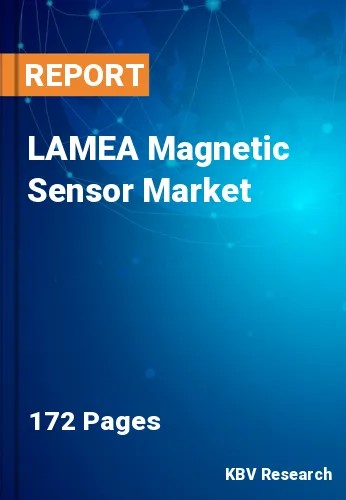The Latin America, Middle East and Africa Magnetic Sensor Market would witness market growth of 8.4% CAGR during the forecast period (2023-2030). In the year 2026, the LAMEA market's volume is expected to surge to 124.9 million Units, showcasing a growth of 10.1% (2023-2030).
Magnetic sensors, a fundamental component of modern electronic systems, have become integral in numerous applications across various industries. These sensors, leveraging the principles of magnetism, detect and measure magnetic fields, providing crucial information for various applications. From automotive and consumer electronics to industrial automation and healthcare, the adoption of magnetic sensors has seen exponential growth, driven by their versatility, precision, and adaptability to diverse environments.
Additionally, the adoption of magnetic sensors has witnessed a steady rise, propelled by advancements in sensor technologies and the increasing integration of electronic components into everyday devices. As industries strive for greater efficiency, automation, and precision in their processes, magnetic sensors have proven indispensable in meeting these demands. One of the primary drivers of adoption is the automotive sector. As the automotive industry continues its trajectory towards electric and autonomous vehicles, the demand for magnetic sensors is expected to soar, ensuring the accurate functioning of safety systems, navigation, and motor control.
Furthermore, according to the International Trade Administration (ITA), the gross domestic product (GDP) of South Africa's automotive industry as a whole was 4.3% in 2021 (2.4% manufacturing and 1.9% retail). As the largest manufacturing sector in the economy, the production of vehicles and automotive components contributed a significant 18.7% of value-added to the domestic manufacturing output, maintaining the industry's position as a major player in South Africa's industrialization process. Thus, the growth of the automotive sector in the LAMEA region will propel the demand in the regional market.
The Brazil market dominated the LAMEA Magnetic Sensor Market by Country in 2022, and would continue to be a dominant market till 2030; thereby, achieving a market value of $120.8 million by 2030. The Argentina market is experiencing a CAGR of 9% during (2023 - 2030). Additionally, The UAE market would exhibit a CAGR of 8.1% during (2023 - 2030).
Based on End-use, the market is segmented into Automotive, Consumer Electronics, Industrial, and Others. Based on Technology, the market is segmented into Hall Effect, Anisotropic Magnetoresistance, Giant Magnetoresistance, Tunnel Magnetoresistance, and Others. Based on Application, the market is segmented into Position Sensing, Speed Sensing, Detection/NDT, Navigation & Electronic Compass, and Others. Based on countries, the market is segmented into Brazil, Argentina, UAE, Saudi Arabia, South Africa, Nigeria, and Rest of LAMEA.
Free Valuable Insights: The Worldwide Magnetic Sensor Market is Projected to reach USD 5.9 Billion by 2030, at a CAGR of 5.8%
The market research report covers the analysis of key stake holders of the market. Key companies profiled in the report include Honeywell International, Inc., Microsemi Corporation (Microchip Technology), NVE Corporation, NXP Semiconductors N.V., Robert Bosch GmbH, TDK Corporation, MEMSIC Semiconductor Co., Ltd. (IDG Capital Investment Consultant Beijing Co Ltd.), Infineon Technologies AG, Magnetic Sensors Corporation and MultiDimension Technology Co., Ltd.
By End-use (Volume, Million Units, USD Billion/Million, 2019-2030)
By Technology (Volume, Million Units, USD Billion/Million, 2019-2030)
By Application (Volume, Million Units, USD Billion/Million, 2019-2030)
By Country (Volume, Million Units, USD Billion/Million, 2019-2030)
Our team of dedicated experts can provide you with attractive expansion opportunities for your business.

